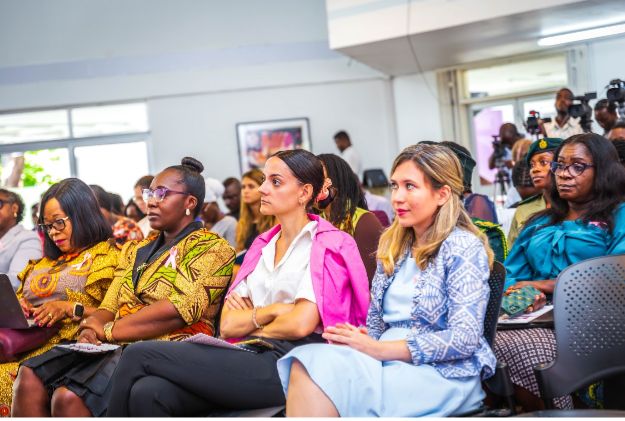By Bertha Badu-Agyei
Accra, Nov 18, GNA – Participants at a conference on Media and Women’s empowerment, have called on the media to champion the implementation of Ghana’s Affirmative Action law passed recently through exemplary reforms and reportage as the first step towards gender equality.
The participants were of the view that the media had a critical role to play in the success of the implementation of the Affirmative Action law and therefore must demonstrate leadership through exemplary reforms that dismantle gendered stereotypes against female journalists which have long existed within the media space.
The conference was organised by the Media Foundation for West Africa (MFWA) as part of activities under the ‘Equal Voices’ project on the theme, “From Policy to Action: Advancing Gender Equality in the Ghanaian Media through the Affirmative Action Law.”
The ‘Equal Voices’ project is jointly implemented by the MFWA and the French media development agency, Canal France International (CFI), aimed at combatting inequalities and stereotypes based on gender while promoting women at all levels of responsibility in the Ivorian and Ghanaian societies through gender-aware and gender-sensitive media practices.
Mr Sulemana Braimah, Executive Director of MFWA, noted that the media as it functioned, currently enabled disempowerment of women, even though it remained the most powerful tool for information dissemination and amplification for voices for agenda setting.
“Sadly, the media in Africa of which Ghana is not an exception are among the culprits of women’s disempowerment” he said.
Women’s voices make up less than one-quarter of those whose views and voices are heard in the media and news spaces and make up just about 22 percent of news sources in Africa and within the digital realm less than 10 percent of women have access to the internet.
Professor Abena Animwaa Yeboah-Banin, Head of the Department of Communications Studies at Legon and the keynote speaker, said available data showed that in the 2000s, women accounted for 24 percent of bylines for stories, while men accounted for 76 percent.
By 2020 the percentage of women’s bylines had increased by only 6 percent to 30% and in terms of numbers when it comes to presenters of media content, there were only seven percent males in the 2000s with females accounting for 93 percent.
However, current statistics show that the percentages of male and female presenters had almost evened out with 49 percent of the presenters now being males “So, in the roles in which the men were dominantly represented, the numbers haven’t evened out but for the ones in which women were leading, these have evened out, almost reaching parity” she noted.

Research, also showed that women journalists tend to be relegated to covering so-called “soft” beats as against the “hard” beats, whiles the number of women who occupy managerial positions in media organizations continue to be drastically few, compared to males.
Prof. Yeboah-Banin pointed out that women now had a more diversified expanse of roles in the media space, but they were not in charge of media houses as well as not really in decision making roles.
That, she said, called for the media “to purge itself first of all these statistically confirmed gender inequalities within the industry, to effectively champion the application of the Affirmative Action law.”
Madame Marine Hayem, the Cooperation Attaché at the French Embassy said women’s rights were human rights and it was important for women to be represented at decision making forums because they brought on board insights and concerns which represented and affected society as a whole.
“When women are involved as journalists or analysts, they bring unique insights that reflect the concerns of a large part of the population,” adding, “We need equal voices, to challenge stereotypes against women.”
Dr Charity Binka, executive Director of Women and Change (WOMEC) a resource person on the Equal Voices project, indicated that they were on course to deliver a roadmap document to guide the countering of gender inequality in the media by February 2025.
The document, when completed, will be the outcome of dialogues that were held with four strategic groups from June to September 2024, thus the Academia, gender-focused CSOs, policymakers, media associations, journalists, and media practitioners.
GNA